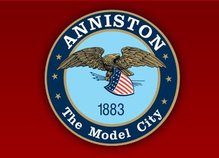
The town itself was also intended to be called Woodstock, but when the time came to file for incorporation, that name had already been taken. Instead, the founders settled on the name “Annie’s Town,” or Anniston, after Tyler’s daughter-in-law, Annie.
The second furnace was opened in 1879, and by the next year Anniston had 942 residents. In 1881, a cotton mill, the Anniston Manufacturing Company, was built, where women and children produced textiles. The Nobles and Tylers were not afraid to be on the forefront of technology, and in 1882 Anniston became the first city in Alabama to be lit by electricity. It was also later among the first to have telephones.
In 1883, the town was finally opened to the public. Lots were sold in June, and an official opening ceremony was held on July 3. Called the “Model City of the New South” by Atlanta Constitution editor Henry Grady, the industrial town grew rapidly once outsiders could move in. More than 9,000 people lived in Anniston by 1890, among them future Alabama governor Thomas Kilby. The city rose to such prominence that it became the seat of Calhoun County in 1900, controversially replacing Jacksonville.
It is interesting to see how Anniston has changed and how it has stayed the same over the past nearly 150 years. Quintard Avenue, once only running between 7th and 23rd Streets, has now been merged into Highway 21, but it still has the tree-lined, divided stretch from 7th to 18th Streets. Noble Street is not the bustling main thoroughfare it once was, but it still home to some great locally owned shops and restaurants, including the renowned Classic On Noble. It’s also home to King’s Palace, the barbershop I go to. (There aren’t many places you can get a good haircut for $12 anymore.)
A well-known newspaper, the Anniston Star, has been published in Anniston since 1912. From 1917 to 1999, a large Army base, Fort McClellan, sat there. The Anniston Army Depot has been there since 1941. An important hospital for the region, Regional Medical Center Anniston, is also located in the city. It opened in 1944 as Anniston Memorial Hospital.
Although no longer quite the booming industrial town of 1890, the Model City remains a significant part of east Alabama.
Author
Calvin Cockrell is a senior at the University of Alabama majoring in journalism and economics. After graduating, he hopes to stay in the South and work in magazine design or editing.
 RSS Feed
RSS Feed